month of its new bomb currently being used against
al-Qaida hold-outs in Afghanistan; it sucks the air
from underground installations, suffocating those
within. The US has also admitted that it has used
depleted uranium weaponry over the last decade
against bunkers in Iraq, Kosovo, and now
Afghanistan.
by ROBERT JAMES PARSONS *
"The immediate concern for medical professionals and employees of aid
organisations remains the threat of extensive depleted uranium (DU)
contamination in Afghanistan." This is one of the conclusions of a
130-page
report, Mystery Metal Nightmare in Afghanistan? (1), by Dai Williams,
an
independent researcher and occupational psychologist. It is the result
of more
than a year of research into DU and its effects on those exposed to
it.
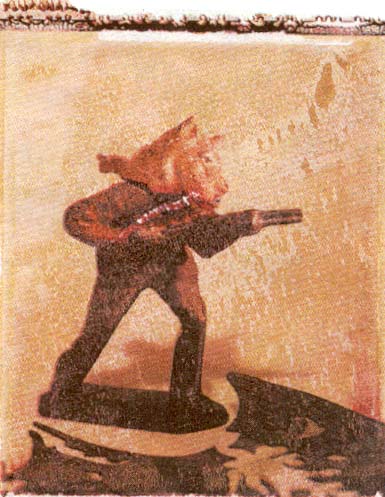
come up with information that he has cross-checked and compared with
weapons that the Pentagon has reported — indeed boasted about — using
during the war. What emerges is a startling and frightening vision of war, both
in Afghanistan and in the future.
Since 1997 the United States has been modifying and upgrading its missiles
and guided (smart) bombs. Prototypes of these bombs were tested in
the
Kosovo mountains in 1999, but a far greater range has been tested in
Afghanistan. The upgrade involves replacing a conventional warhead
by a
heavy, dense metal one (3). Calculating the volume and the weight of
this
mystery metal leads to two possible conclusions: it is either tungsten
or
depleted uranium.
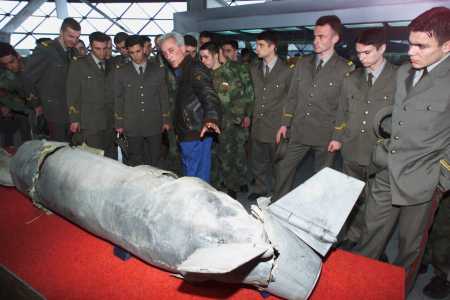
Tungsten poses problems. Its melting point (3,422°C) makes it very
hard to
work; it is expensive; it is produced mostly by China; and it does
not burn.
DU is pyrophoric, burning on impact or if it is ignited, with a melting
point of
1,132°C; it is much easier to process; and as nuclear waste, it
is available free
to arms manufacturers. Further, using it in a range of weapons significantly
reduces the US nuclear waste storage problem.
This type of weapon can penetrate many metres of reinforced concrete
or
rock in seconds. It is equipped with a detonator controlled by a computer
that
measures the density of the material passed through and, when the warhead
reaches the targeted void or a set depth, detonates the warhead, which
then
has an explosive and incendiary effect. The DU burns fiercely and rapidly,
carbonising everything in the void, while the DU itself is transformed
into a fine
uranium oxide powder. Although only 30% of the DU of a 30mm penetrator
round is oxidised, the DU charge of a missile oxidises 100%. Most of
the dust
particles produced measure less than 1.5 microns, small enough to be
breathed in.
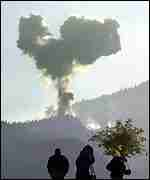 |
For a few researchers in this area, the controversy over the use of
DU
weapons during the Kosovo war got side-tracked. Instead of asking what
weapons might have been used against most of the targets (underground
mountain bunkers) acknowledged by Nato, discussion focused on 30mm
anti-tank penetrator rounds, which Nato had admitted using but which
would
have been ineffective against superhardened underground installations.
However, as long as the questions focused on such anti-tank penetrators,
they
dealt with rounds whose maximum weight was five kilos for a 120mm round.
The DU explosive charges in the guided bomb systems used in Afghanistan
can weigh as much as one and a half metric tons (as in Raytheon's Bunker
Buster — GBU-28) (4).
Who cares?
In Geneva, where most of the aid agencies active in Afghanistan are
based,
Williams's report has caused varied reactions. The United Nations Office
of
the High Commissioner for Refugees and the Office for the Co-ordination
of
Humanitarian Affairs have circulated it. But it does not seem to have
worried
agency and programme directors much. Only Médecins sans Frontiéres
and
the UN Environment Programme (UNEP) say they fear an environmental
and
health catastrophe.
In March and April 2001, UNEP and the World Health Organisation (WHO)
published reports on DU, reports that are frequently cited by those
claiming
DU is innocuous. The Pentagon emphasises that the organisations are
independent and neutral. But the UNEP study is, at best, compromised.
The
WHO study is unreliable.
The Kosovo assessment mission that provided the basis for the UNEP
analysis was organised using maps supplied by Nato; Nato troops
accompanied the researchers to protect them from unexploded munitions,
including cluster bomb sub-munitions. These sub-munitions, as Williams
discovered, were probably equipped with DU shaped-charges. Nato troops
prevented researchers from any contact with DU sub-munitions, even
from
discovering their existence.
During the 16 months before the UNEP mission, the Pentagon sent at least
10
study teams into the field and did major clean-up operations (5). Out
of 8,112
anti-tank penetrator rounds fired on the sites studied, the UNEP team
recovered only 11, although many more would not have been burned. And,
18 to 20 months after the firing, the amount of dust found directly
on sites hit
by these rounds was particularly small.
The WHO undertook no proper epidemiological study, only an academic
desk study. Under pressure from the International Atomic Energy Agency,
the
WHO confined itself to studying DU as a heavy-metal, chemical contaminant.
In January 2001, alerted to the imminent publication by Le Monde
diplomatique of an article attacking its inaction (6), the WHO held
a press
conference and announced a $2m fund — eventually $20m — for research
into DU. According Dr Michael Repacholi of the WHO, the report on DU,
under way since 1999 and supervised by the British geologist Barry
Smith,
would be expanded to include radiation contamination. The work would
include analyses of urine of people exposed to DU, conducted to determine
the exposure level.
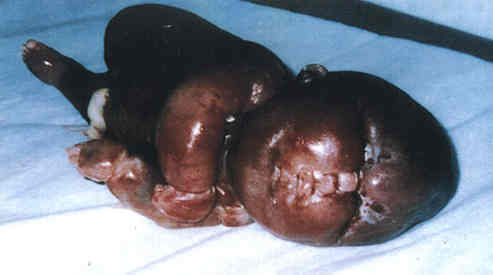
But the monograph, published 10 weeks later, was merely a survey of
existing
literature on the subject. Out of hundreds of thousands of monographs
published since 1945, which ought to have been explored in depth, the
report
covered only monographs on chemical contamination, with a few noteworthy
exceptions. The few articles about dealing with radiation contamination
that
had been consulted came from the Pentagon and the Rand Corporation,
the
Pentagon think- tank. It is unsurprising that the report was bland.
The recommendations of the two reports were common sense, and repeated
advice already given by the WHO and echoed regularly by the aid
organisations working in Kosovo. This included marking off known target
sites, collecting penetrator rounds wherever possible, keeping children
away
from contaminated sites, and the suggested monitoring of some wells
later on.
Uranium plus
The problem can be summed up as two key findings:
o Radiation emitted by DU threatens the human body because, once DU
dust
has been inhaled, it becomes an internal radiation source; international
radiation protection standards, the basis of expert claims that DU
is harmless,
deal only with external radiation sources;
o Dirty DU — the UNEP report, for all its failings, deserves credit
for
mentioning this. Uranium from reactors, recycled for use in munitions,
contains
additional highly toxic elements, such as plutonium, 1.6 kilogrammes
of which
could kill 8bn people. Rather than depleted uranium, it should be called
uranium plus.
In a French TV documentary on Canal+ in January 2001 (7), a team of
researchers presented the results of an investigation into a gaseous
diffusion
— recycling — plant in Paducah, Kentucky, US. According to the lawyer
for
100,000 plaintiffs, who are past and present plant employees, they
were
contaminated because of flagrant non-compliance with basic safety standards;
the entire plant is irrevocably contaminated, as is everything it produces.
The
documentary claimed that the DU in the missiles that were dropped on
Yugoslavia, Afghanistan and Iraq is likely to be a product of this
plant.
These weapons represent more than just a new approach to warfare. The
US
rearmament programme launched during Ronald Reagan's presidency was
based on the premise that the victor in future conflicts would be the
side that
destroyed the enemy's command and communications centres. Such centres
are increasingly located in superhardened bunkers deep underground.
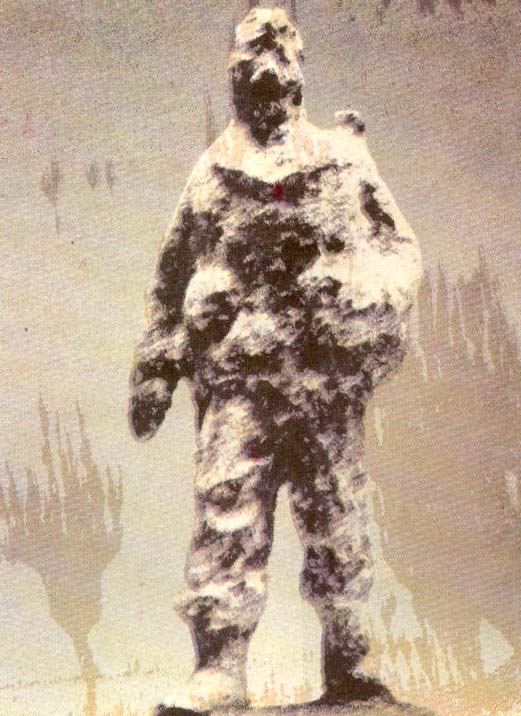
Hitting such sites with nuclear weapons would do the job well, but
also
produce radiation that even the Pentagon would have to acknowledge
as
fearsome, not to mention the bad public relations arising from
mushroom-shaped clouds in a world aware of the dangers of nuclear war.
DU warheads seem clean: they produce a fire modest in comparison with
a
nuclear detonation, though the incendiary effect can be just as destructive.
The information that Williams has gathered (8) shows that after computer
modelling in 1987, the US conducted the first real operational tests
against
Baghdad in 1991. The war in Kosovo provided further opportunity to
test, on
impressively hard targets, DU weapon prototypes as well as weapons
already
in production. Afghan-istan has seen an extension and amplification
of such
tests. But at the Pentagon there is little transparency about this.
Williams cites several press articles (9) in December 2001 mentioning
NBC
(nuclear-biological-chemical) teams in the field checking for possible
contamination. Such contamination, according to the US government,
would
be attributed to the Taliban. But, last October, Afghan doctors, citing
rapid
deaths from internal ailments, were accusing the coalition of using
chemical
and radioactive weapons. The symptoms they reported (haemorrhaging,
pulmonary constriction and vomiting) could have resulted from radiation
contamination.
On 5 December, when a friendly-fire bomb hit coalition soldiers, media
representatives were all immediately removed from the scene and locked
up
in a hangar. According to the Pentagon, the bomb was a GBU-31, carrying
a
BLU-109 warhead. The Canal+ documentary shows an arms manufacturer's
sales representative at an international fair in Dubai in 1999, just
after the
Kosovo war. He is presenting a BLU-109 warhead and describing its
penetration capabilities against superhardened underground targets,
explaining
that this model had been tested in a recent war.
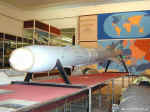
Donald Rumsfeld, US Secretary of Defence, on 16 January this year admitted
that the US had found radiation in Afghanistan (10). But this, he reassured,
was merely from DU warheads (supposedly belonging to al-Qaida); he
did
not explain how al-Qaida could have launched them without planes. Williams
points out that, even if the coalition has used no DU weapons, those
attributed
to al-Qaida might turn out to be an even greater source of contamination,
especially if they came from Russia, in which case the DU could be
even
dirtier than that from Paducah.
Following its assessment mission in the Balkans, UNEP set up a post-conflict
assessment unit. Its director, Henrik Slotte, has announced that it
is ready to
work in Afghanistan as soon as possible, given proper security, unimpeded
access to hit sites, and financing. The WHO remains silent. When questions
about the current state of the DU research fund were addressed to Jon
Lidon,
spokesman for the director general, Dr Gro Harlem Brundtland, the WHO
did not answer. Yet Williams urges that studies begin immediately,
as victims
of severe DU exposure may soon all be dead, yet with their deaths attributed
to the rigours of winter.
In Jefferson County, Indiana, the Pentagon has closed the 200-acre
(80-hectare) proving ground where it used to test-fire DU rounds. The
lowest
estimate for cleaning up the site comes to $7.8bn, not including permanent
storage of the earth to a depth of six metres and of all the vegetation.
Considering the cost too high, the military finally decided to give
the tract to
the National Park Service for a nature preserve — an offer that was
promptly
refused. Now there is talk of turning it into a National Sacrifice
Zone and
closing it forever. This gives an idea of the fate awaiting those regions
of the
planet where the US has used and will use depleted uranium.
* Journalist, Geneva
(1) See website
(2) The internet sites of Janes Defense Information, the Federation
of American
Scientists, the Centre of Defense Information.
(3) See FAS Website
(4) FAS and USA Today
(5) Chronology of environmental sampling in the Balkans
(6) See Deafening silence on depleted uranium, Le Monde diplomatique
English edition,
February 2001.
(7) La Guerre radioactive secrète, by Martin Meissonnier, Roger
Trilling, Guillaume
d'Allessandro and Luc Hermann, first broadcast in February 2000; updated
and
rebroadcast in January 2001 under the title L'Uranium appauvri, nous
avons retrouvé
l'usine contaminée by Roger Trilling and Luc Hermann.
(8) The Use of Modeling and Simulation in the Planning of Attacks on
Iraqi Chemical
and Biological Warfare Targets
(9) For example "New Evidence is Adding to US Fears of Al-Qaida Dirty
Bomb",
International Herald Tribune, December 5, 2001; "Uranium Reportedly
Found in
Tunnel Complex", USA Today, December 24, 2001.
(10) "US Says More Weapons Sites Found in Afghanistan", Reuters, January
16, 2002.
Translated by the author